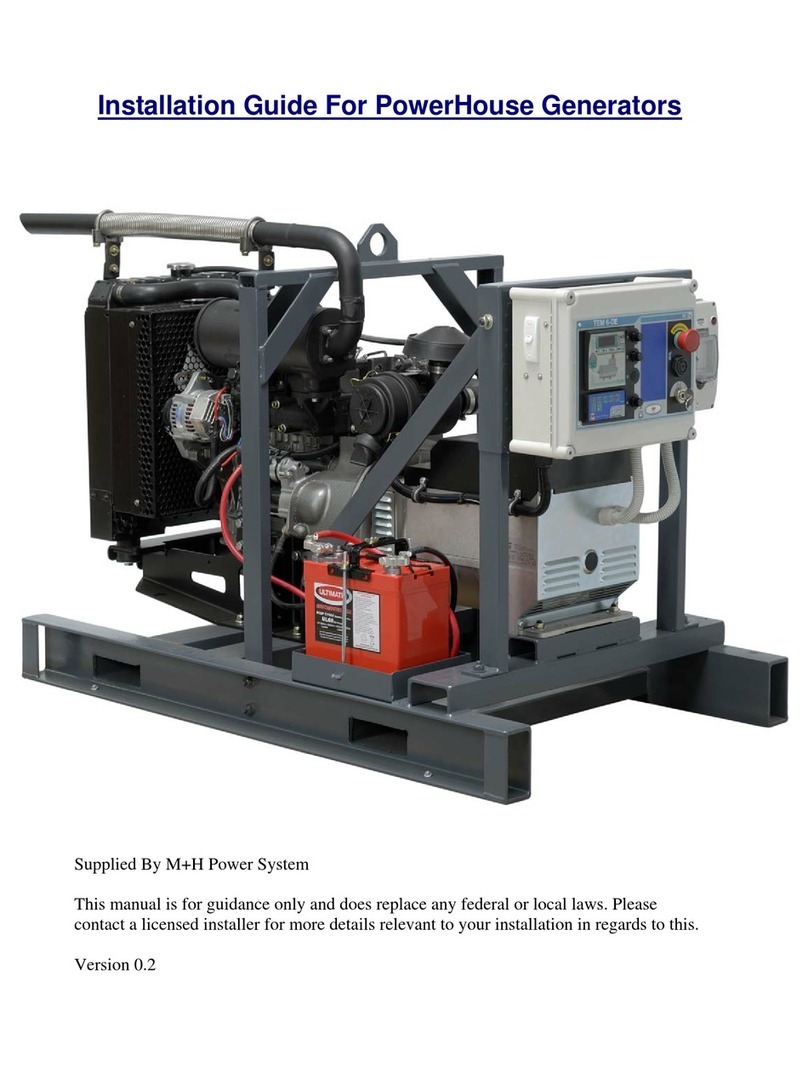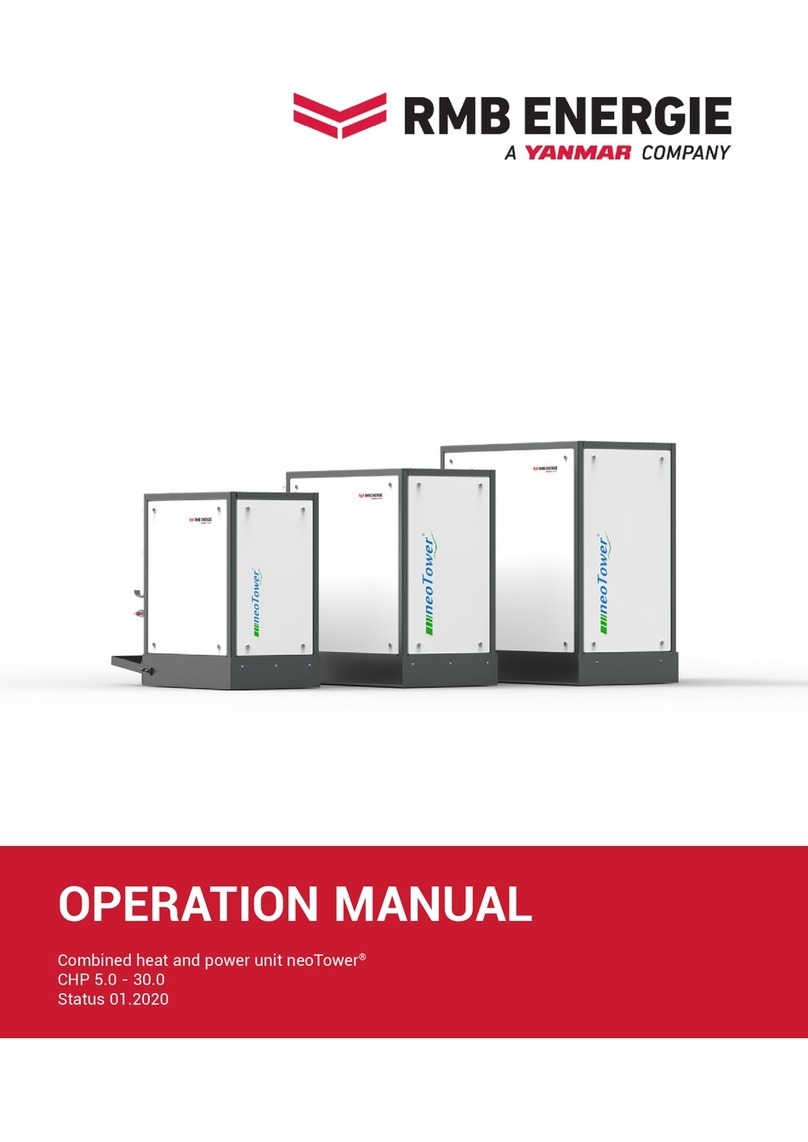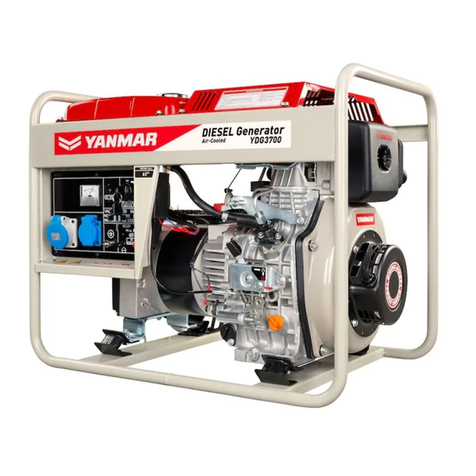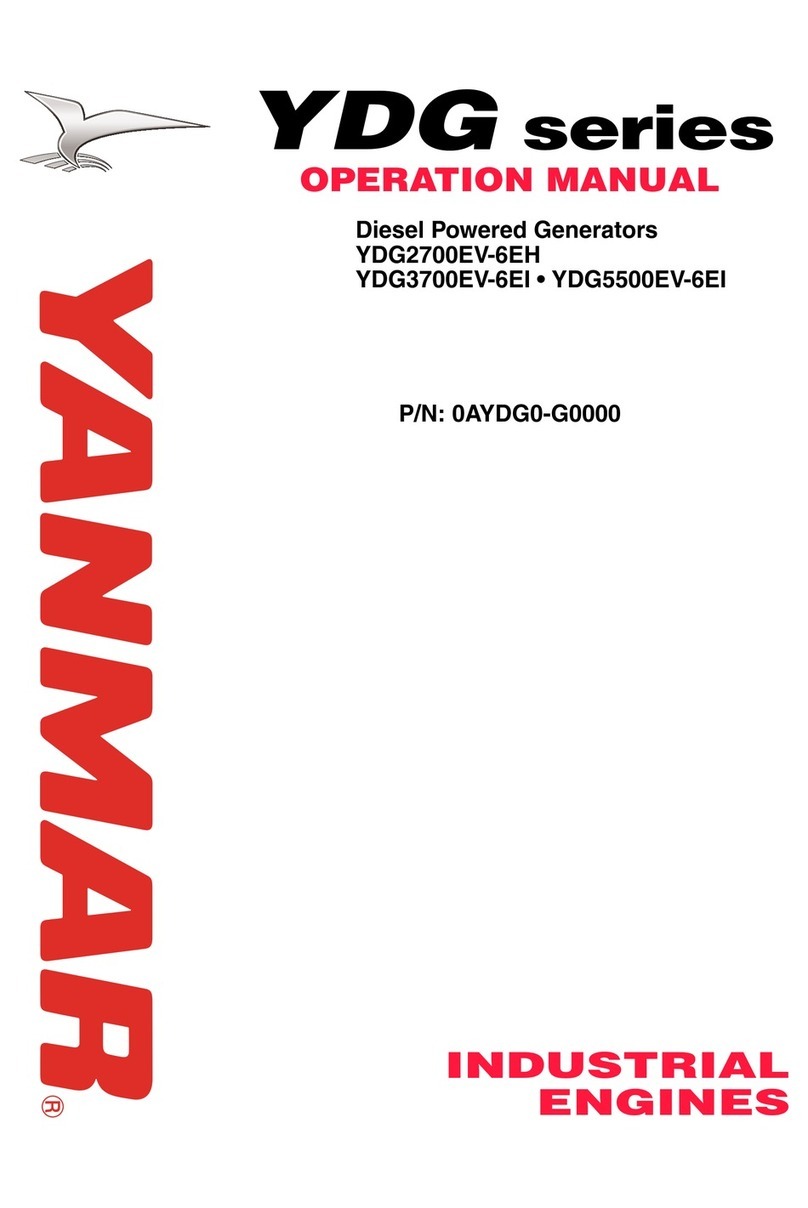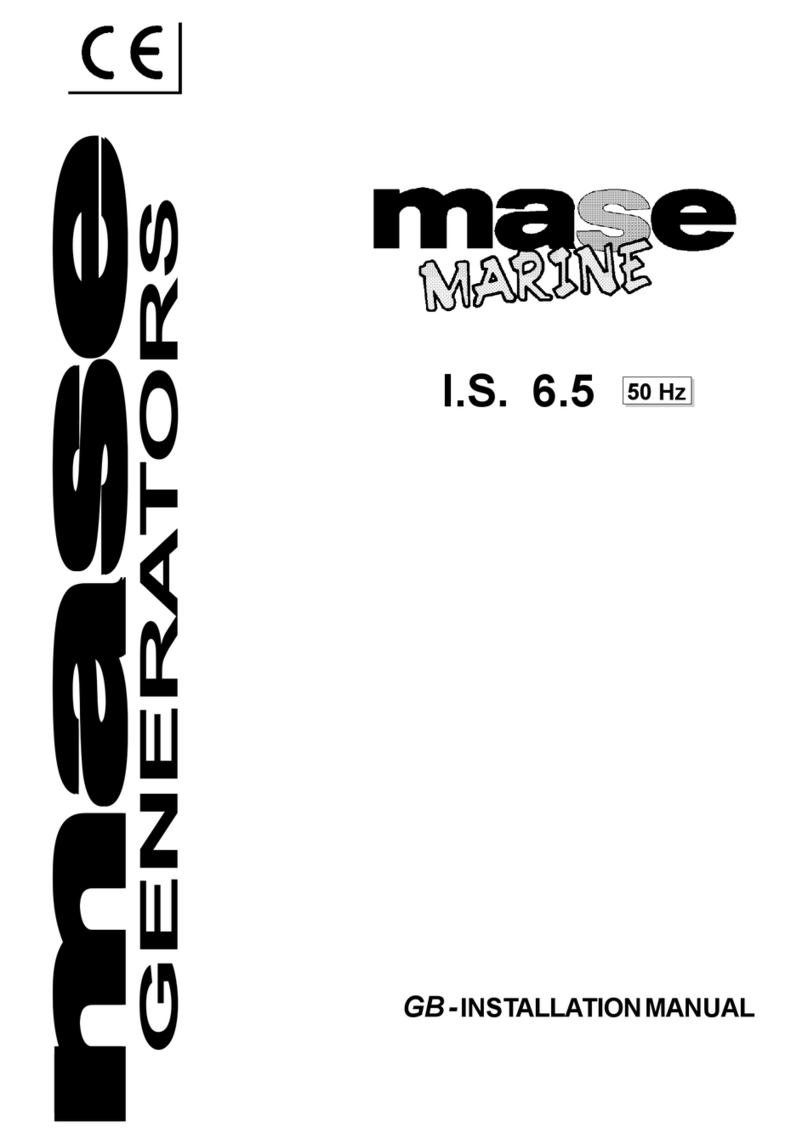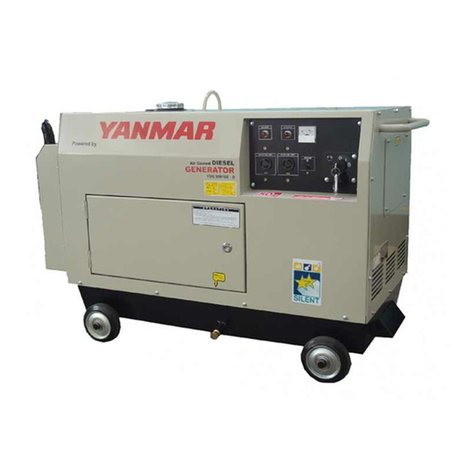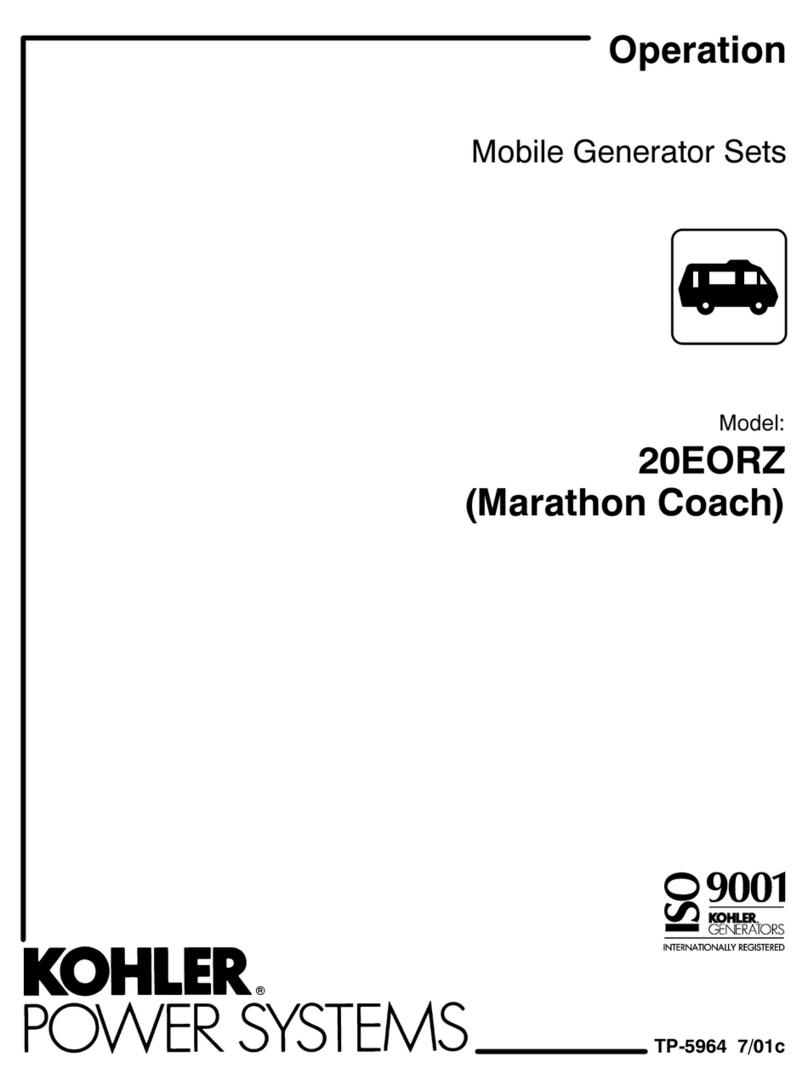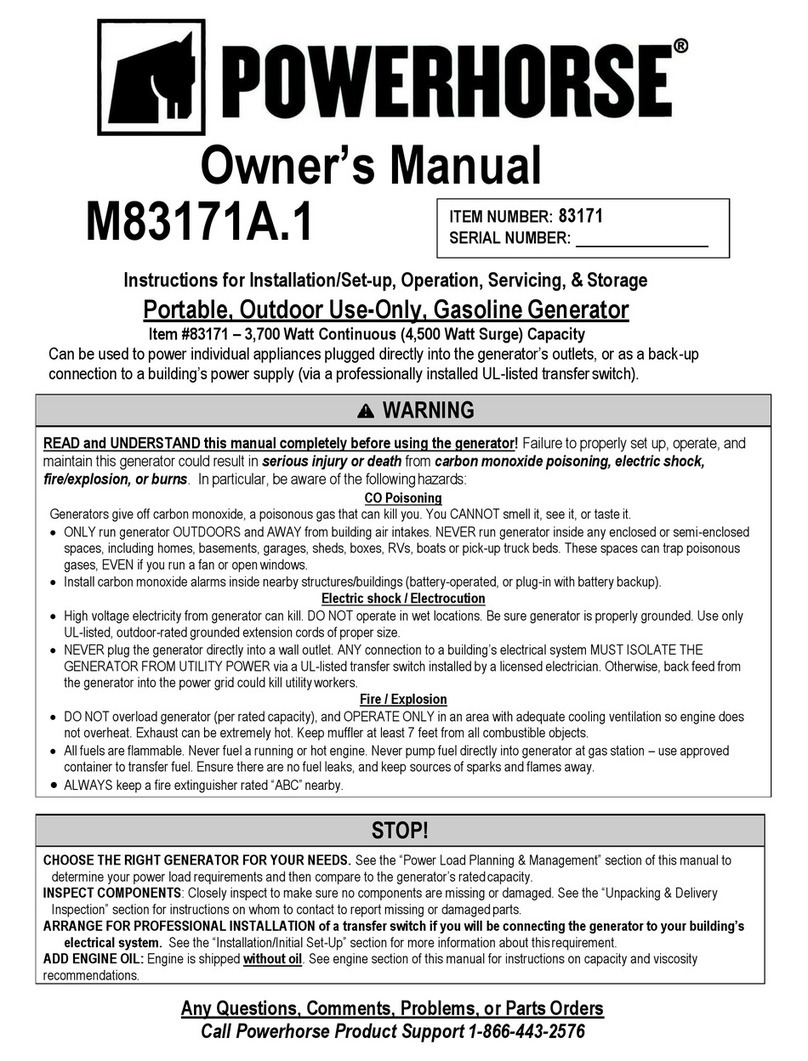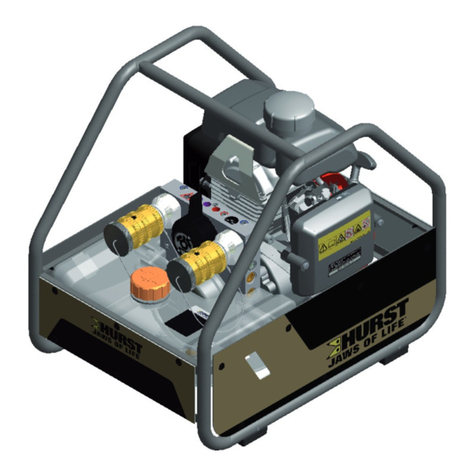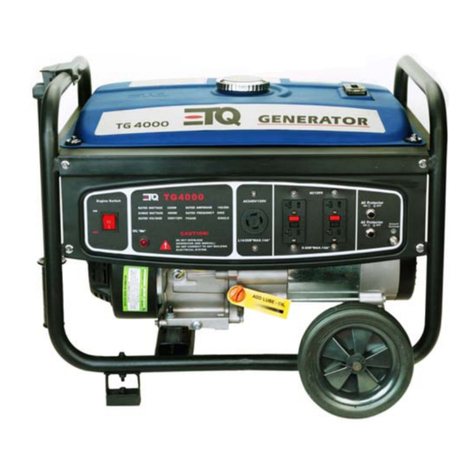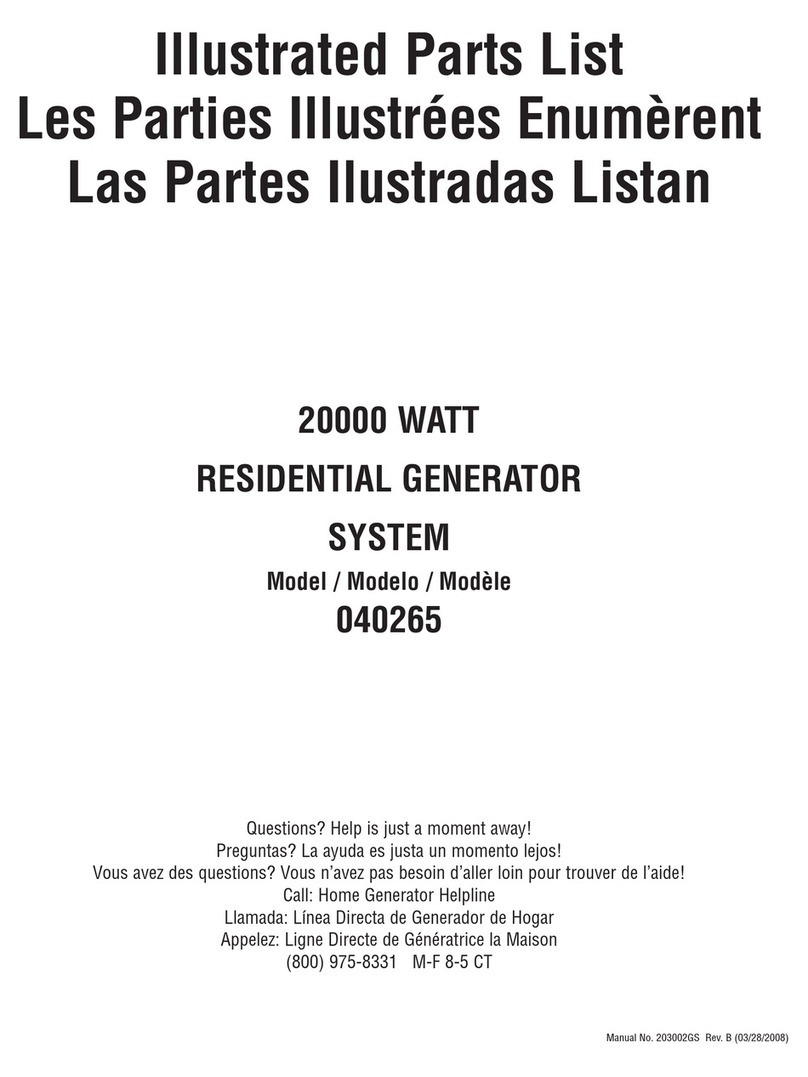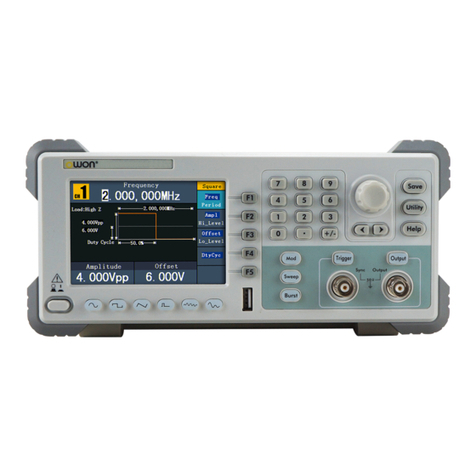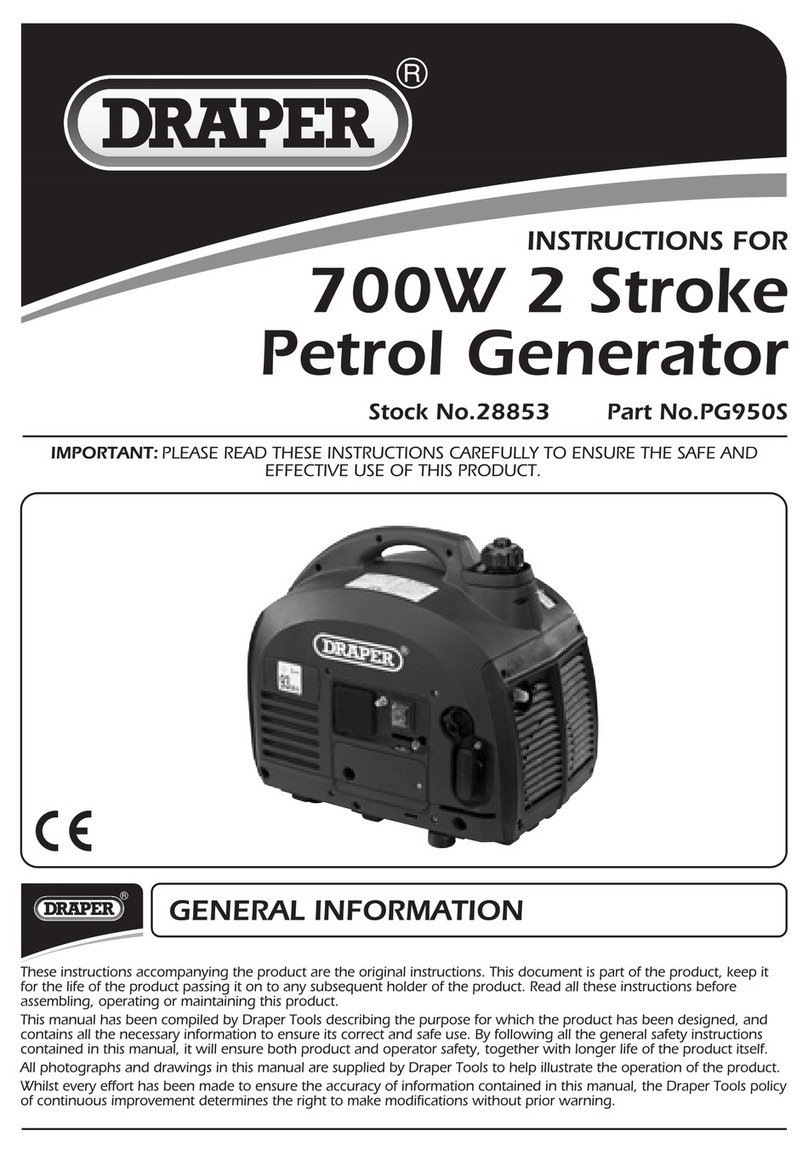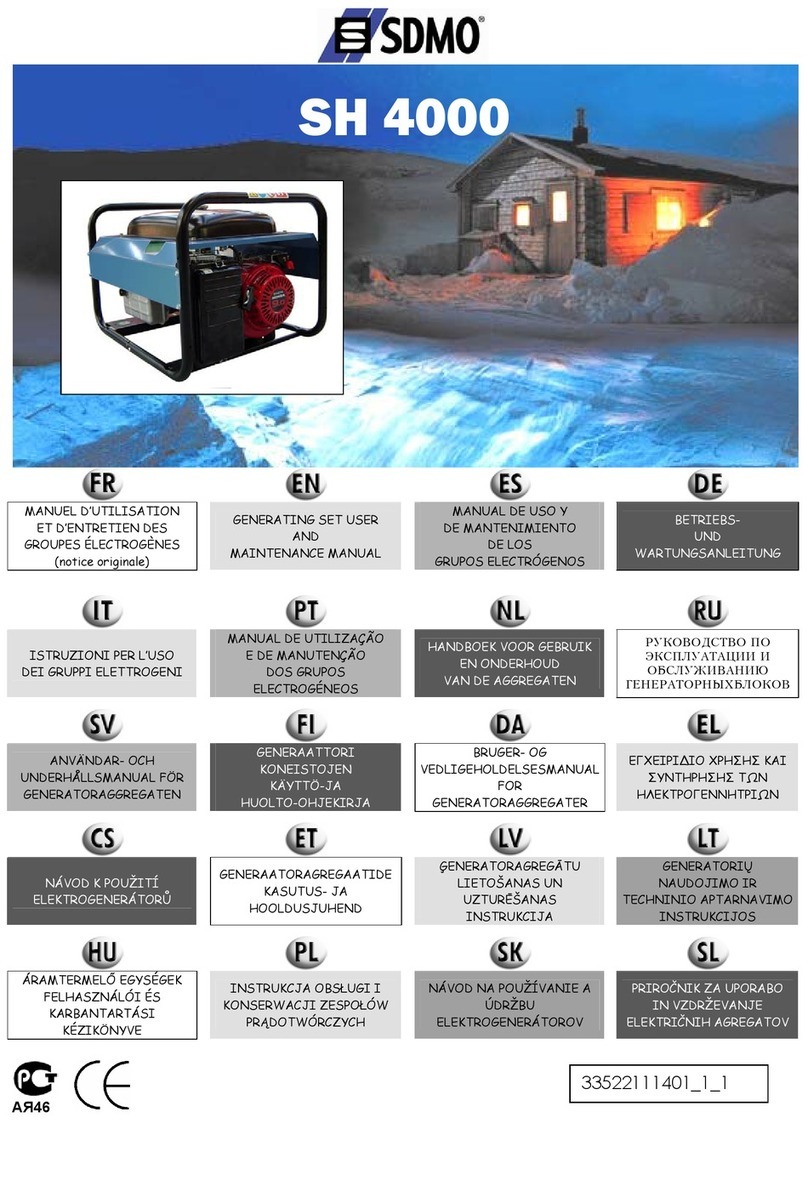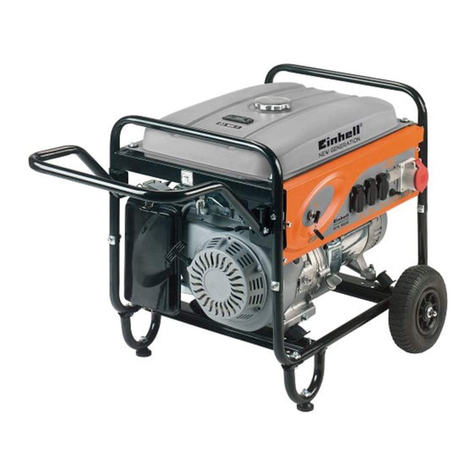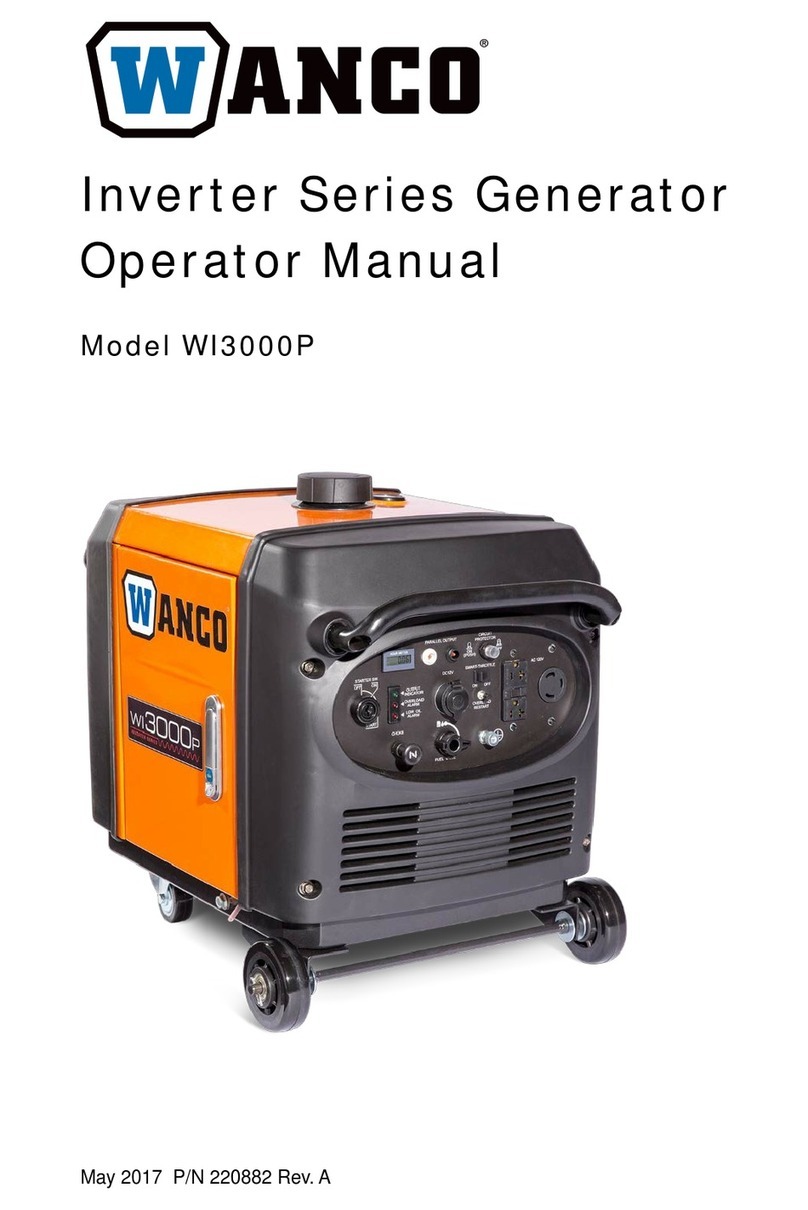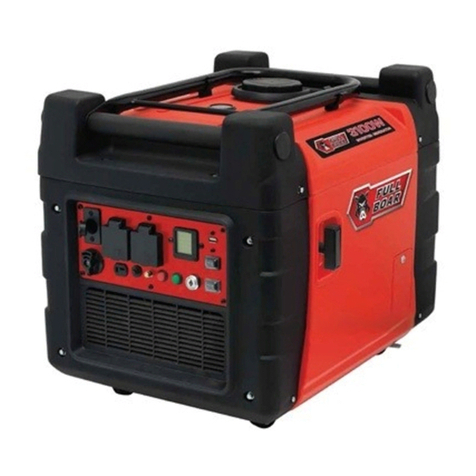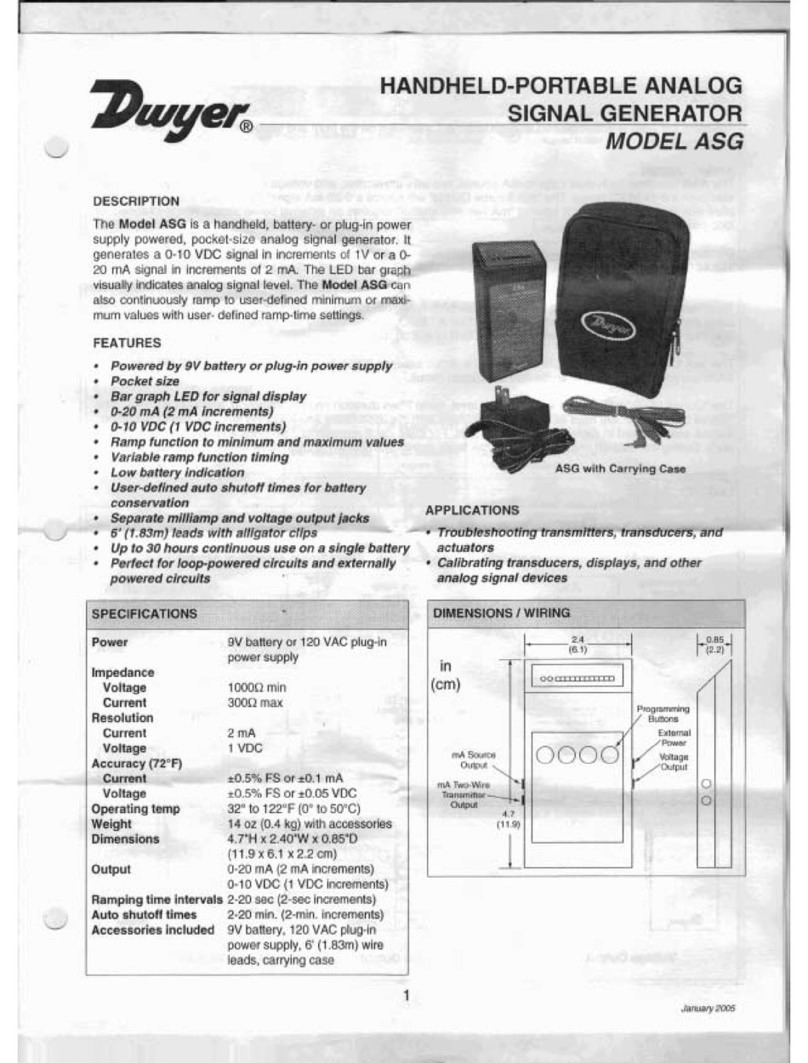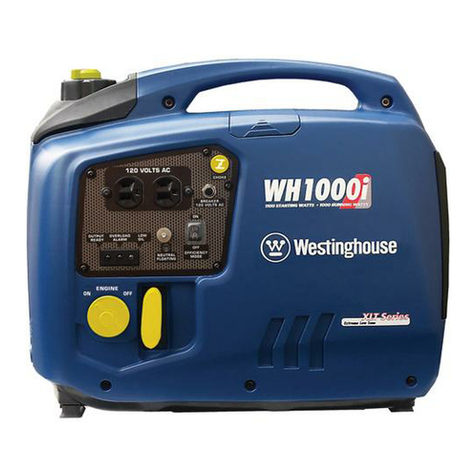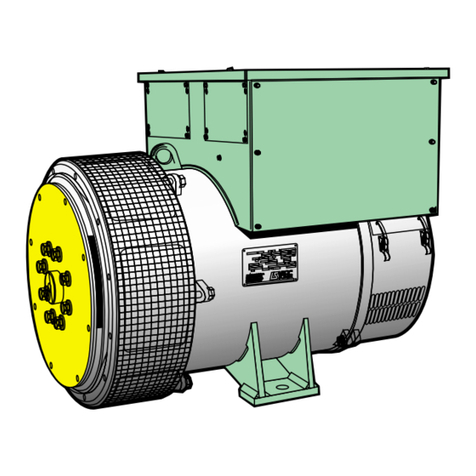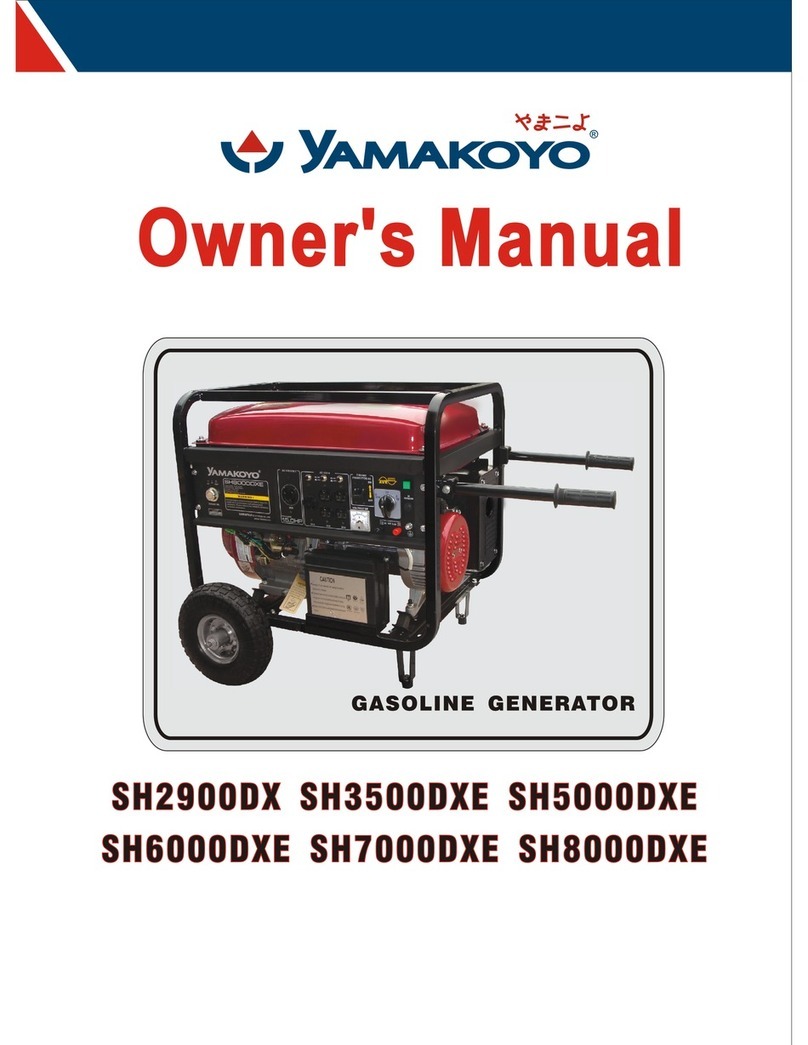
IS 3.5 - 4.0
2
IGB
INDICE
Indice
1 Identificazione della macchina .............. 5
1.1 Composizione dei gruppi elettrogeni ........... 5
2 TABELLA ATTREZZI .................................. 9
3 ALTERNATORE ........................................ 13
3.1 Statore ...................................................... 15
3.1.1 Avvolgimenti di potenza............................. 15
3.1.2 Avvolgimenti di eccitazione ....................... 17
3.1.3 Termostato alternatore .............................. 17
3.1.4 Avvolgimenti di carica batteria ................... 19
3.2 Rotore ....................................................... 21
3.2.1 Avvolgimento di rotore (n°2) ...................... 21
3.2.2 Diodi rotore (n°2) ....................................... 23
3.2.3 Varistori rotore (n°2) .................................. 23
3.3 Condensatori ............................................ 25
4 MOTORE .................................................. 27
4.1 Caratteristiche tecniche ............................ 25
4.2 Manutenzione ........................................... 28
4.3 Tavola guasti ............................................. 30
4.4 Combustibile ............................................. 35
4.5 Pompa gasolio elettrica ............................ 37
4.6 Lubrificazione............................................ 39
5 SENSORI ................................................. 41
5.1 Termostato testata motore aperto ............. 41
5.2 Termostato motore a circuito chiuso (mare)43
5.3 Pressostato olio........................................ 45
6 RAFFREDDAMENTO ................................ 47
6.1 Impianto “acqua mare/circuito chiuso" ...... 47
6.2 Pompa acqua ........................................... 49
6.3 Cinghia pompa acqua ............................... 51
6.4 Scambiatore di calore acqua/aria.............. 53
7 REGOLAZIONI ......................................... 55
7.1 Regolazione dei giri .................................. 55
7.2 Regolazione serrature e maniglie .............. 57
7.3 Pulizia filtro aria motore ............................ 59
7.4 Controllo livello olio ................................... 61
7.5 Pulizia filtro olio motore ............................ 61
8 IMPIANTO ELETTRICO ........................... 63
8.1 Circuito di comando .................................. 63
8.1.1 Cavo multipolare ....................................... 69
8.2 Elettrovalvola ............................................. 71
8.3 Interruttore termico (AC circuit breaker) .... 73
8.4 Cablaggio motore ...................................... 75
8.5 Caricabatteria ........................................... 77
8.6 Fusibile ..................................................... 79
8.7 Motorino avviamento ................................. 81
8.8 Batteria ..................................................... 83
9 SMONTAGGIO ......................................... 85
9.1 Rimozione della cassa .............................. 85
9.2 Rimozione alternatore ............................... 95
9.3 Rimozione del coperchio alternatore lato ......
cuscinetto ................................................. 97
9.4 Rimozione dello statore ............................ 99
9.5 Rimozione del rotore ............................... 101
9.6 Rimozione del cuscinetto di rotore .......... 101
Index
1 Machine identification........................5
1.1 Generatorscomposition .......................... 5
2 TOOLTABLE .......................................... 9
3 ALTERNATOR ..................................... 13
3.1 Stator.................................................... 15
3.1.1 Powerwindings..................................... 15
3.1.2 Excitation windings ............................... 17
3.1.3 Alternator thermostat ............................ 17
3.1.4 Battery charger windings ................ 19
3.2 Rotor ..................................................... 21
3.2.1 Rotorwinding(n°2) ............................... 21
3.2.2 Rotor diodes (n°2) ................................. 23
3.2.3 Rotor varistors (n°2) ............................ 23
3.3 Capacitors ............................................ 25
4 ENGINE ................................................ 27
4.1 Technical features ................................. 25
4.2 Maintenance ......................................... 28
4.3 Trouble-shooting ................................... 30
4.4 Fuel ...................................................... 35
4.5 Electric diesel fuel pump ...................... 37
4.6 Lubrication ............................................ 39
5 SENSORS ............................................ 41
5.1 Closed-circuit engine thermal switch .... 41
5.2 Open-circuit engine thermostat (sea) .... 43
5.3 Oil pressure switch ............................... 45
6 SEA WATER COOLING ....................... 47
6.1 Seawater/closed-circuit system ............ 47
6.2 Water pump .......................................... 49
6.3 Water pump belt ................................... 51
6.4 Water/air heat exchanger ...................... 53
7 ADJUSTMENTS ................................... 55
7.1 Rpm adjustment ................................... 55
7.2 Lock and handle adjustment ................. 57
7.3 Engine air filter cleaning .................. 59
7.4 Level oil check ...................................... 61
7.5 Engine oil filter cleaning ........................ 61
8 ELECTRICAL SYSTEM ........................ 63
8.1 Command circuit .................................. 63
8.1.1 Multicore cable ..................................... 69
8.2 Stop solenoid........................................ 71
8.3 Thermal switch (ACcircuit breaker) ........... 73
8.4 Enginewiring ........................................ 75
8.5 Battery charger ..................................... 77
8.6 Fuse ..................................................... 79
8.7 Starter motor ........................................ 81
8.8 Battery .................................................. 83
9 DISASSEMBLY .................................... 85
9.1 Removing the casing............................. 85
9.2 Removing the alternator ........................ 95
9.3 Removing the alternator cover
on the bearing side ............................... 97
9.4 Removing the stator .............................. 99
9.5 Removingthe rotor ...............................101
9.6 Removing the rotor bearing ..................101

